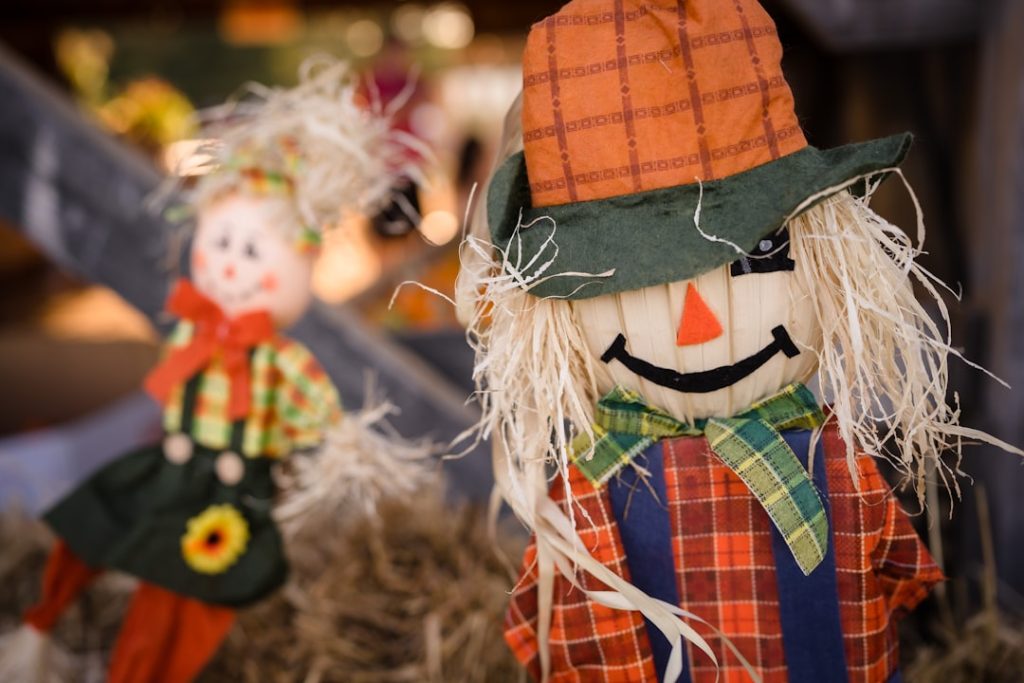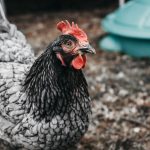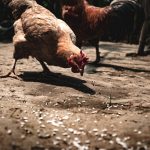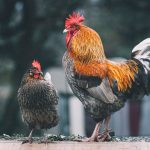Cooper’s hawks, commonly referred to as chicken hawks, pose a significant threat to backyard poultry. These raptors are adept hunters, capable of swiftly capturing chickens. Identifying Cooper’s hawks can be challenging, as they are often confused with other hawk species.
However, several distinguishing features can aid in their identification. Cooper’s hawks are medium-sized birds characterized by long tails and short, rounded wings. They possess a distinctive dark cap on their heads and reddish barring on their underparts.
Their eyes are typically bright red, and they have sharp, curved beaks adapted for tearing prey. Behaviorally, Cooper’s hawks are often observed perched in trees or on fence posts, surveying their surroundings for potential prey. They are agile flyers, capable of rapid dives to capture targets.
These raptors are known for their stealthy hunting tactics, relying on surprise and speed to catch victims unaware. Understanding both the physical and behavioral characteristics of Cooper’s hawks is essential for chicken owners to effectively protect their flocks from these predators.
Table of Contents
- 1 Creating a Secure Chicken Coop: Building a Safe Haven for Chickens
- 2 Implementing Scare Tactics: Using Visual Deterrents to Keep Chicken Hawks at Bay
- 3 Sound Strategies: Using Auditory Deterrents to Ward Off Chicken Hawks
- 4 Utilizing Predator Decoys: Using Natural Enemies to Keep Chicken Hawks Away
- 5 Protective Netting and Fencing: Creating Physical Barriers to Protect Chickens
- 6 Monitoring and Maintenance: Regularly Checking for Signs of Chicken Hawk Activity and Making Necessary Adjustments
- 7 FAQs
Key Takeaways
- Chicken hawks pose a threat to backyard chickens and can be identified by their sharp talons, hooked beaks, and keen eyesight.
- Building a secure chicken coop with strong, sturdy materials and a covered run can provide a safe haven for chickens to protect them from chicken hawks.
- Visual deterrents such as scarecrows, reflective objects, and predator silhouettes can help keep chicken hawks at bay by making the area less appealing to them.
- Auditory deterrents like wind chimes, radios, and predator calls can be effective in warding off chicken hawks by creating a hostile environment for them.
- Utilizing predator decoys such as fake owls, snakes, or even a well-trained dog can help keep chicken hawks away by mimicking natural enemies.
- Protective netting and fencing around the chicken coop and run can create physical barriers to prevent chicken hawks from accessing the chickens.
- Regularly monitoring the chicken coop for signs of chicken hawk activity and making necessary adjustments to the deterrents and barriers can help maintain a secure environment for the chickens.
Creating a Secure Chicken Coop: Building a Safe Haven for Chickens
Designing the Coop
When constructing a chicken coop, it’s essential to consider the size and layout of the structure. The coop should be spacious enough to comfortably accommodate the number of chickens in your flock, with plenty of room for them to move around and perch. Additionally, the coop should be equipped with sturdy walls and a secure roof to prevent chicken hawks from gaining access to your chickens.
Coop Placement and Visibility
In addition to the physical structure of the coop, it’s vital to consider the placement of the coop within your yard or property. Ideally, the coop should be located in an area that is easily visible from your house or other frequently occupied areas. This allows for regular monitoring of your chickens and helps deter chicken hawks from approaching the coop.
Additional Security Measures
Furthermore, surrounding the coop with dense shrubbery or tall grass can provide additional cover for your chickens and make it more difficult for predators to approach undetected. By creating a secure and well-placed chicken coop, you can provide your flock with a safe and protected environment.
Implementing Scare Tactics: Using Visual Deterrents to Keep Chicken Hawks at Bay

Visual deterrents can be an effective way to keep chicken hawks at bay and protect a flock of chickens. These deterrents work by creating an intimidating or threatening environment that discourages predators from approaching the coop. One common visual deterrent is the use of scarecrows or other human-like figures placed near the coop.
The presence of these figures can make chicken hawks wary of approaching the area, as they may mistake them for potential threats. Additionally, reflective objects such as shiny tape or aluminum foil strips can be hung around the coop to create flashes of light that startle and deter predators. Another visual deterrent that can be effective in deterring chicken hawks is the use of predator eyespots.
These are large, eye-like patterns that can be painted or attached to surfaces near the coop. The presence of these eyespots can create the illusion of being watched by a larger predator, causing chicken hawks to think twice before approaching. Additionally, installing motion-activated lights or sprinkler systems near the coop can startle predators and discourage them from coming too close.
By implementing visual deterrents, chicken owners can create an environment that is unappealing to chicken hawks and reduce the risk of predation.
Sound Strategies: Using Auditory Deterrents to Ward Off Chicken Hawks
In addition to visual deterrents, auditory deterrents can also be effective in warding off chicken hawks and protecting a flock of chickens. These deterrents work by creating loud or unexpected noises that startle and deter predators from approaching the coop. One common auditory deterrent is the use of predator calls or distress calls of other birds.
These calls can be played on a loop using a loudspeaker near the coop, creating the impression that there is a larger predator in the area. The presence of these calls can make chicken hawks hesitant to approach and increase their wariness of the area. Another effective auditory deterrent is the use of wind chimes or other noise-making devices near the coop.
The sound of these devices can create an unpredictable and unsettling environment for predators, making them less likely to approach. Additionally, installing motion-activated alarms or sound-emitting devices near the coop can startle predators and discourage them from coming too close. By using auditory deterrents in conjunction with visual deterrents, chicken owners can create a multi-sensory approach to protecting their flock from chicken hawks.
Utilizing Predator Decoys: Using Natural Enemies to Keep Chicken Hawks Away
Utilizing predator decoys can be an effective way to keep chicken hawks away from a flock of chickens. These decoys work by creating the illusion that there is a larger predator in the area, which can deter chicken hawks from approaching the coop. One common predator decoy is the use of plastic owls or hawk models placed near the coop.
The presence of these decoys can make chicken hawks think twice before approaching, as they may mistake them for real predators. Additionally, installing motion-activated decoys that move or emit sounds can further enhance their effectiveness in deterring predators. Another effective predator decoy is the use of live animals such as dogs or geese near the coop.
These animals are natural enemies of chicken hawks and their presence can create an intimidating environment for predators. Additionally, allowing chickens to free-range in areas where natural predators such as foxes or coyotes are present can also help deter chicken hawks from approaching. By utilizing predator decoys, chicken owners can create an environment that is unappealing to chicken hawks and reduce the risk of predation.
Protective Netting and Fencing: Creating Physical Barriers to Protect Chickens

Netting: A Barrier Against Predators
Netting is a crucial component of a secure chicken coop, providing a barrier that prevents chicken hawks and other predators from swooping down and snatching up chickens. The netting should be made from durable materials that are resistant to tearing and provide adequate coverage for the entire coop area.
Fencing: A Physical Barrier Against Predators
Fencing is another essential component of a secure chicken coop, creating a physical barrier that prevents predators from gaining access to the chickens. When selecting fencing materials, it’s important to choose options that are sturdy and difficult for predators to breach. Wire mesh fencing with small gaps is an effective choice for keeping out chicken hawks and other predators.
Additional Security Measures
Burying the bottom edge of the fencing underground can prevent predators from digging underneath and gaining access to the coop. By creating physical barriers such as netting and fencing, chicken owners can provide their flock with an added layer of protection against chicken hawks.
Monitoring and Maintenance: Regularly Checking for Signs of Chicken Hawk Activity and Making Necessary Adjustments
Regular monitoring and maintenance are crucial for effectively protecting a flock of chickens from chicken hawk activity. Chicken owners should regularly inspect the coop and surrounding areas for signs of predator activity, such as feathers or droppings near the coop. Additionally, checking for any damage to netting or fencing is important to ensure that there are no weak points that could allow predators to gain access.
Making necessary adjustments such as repairing damaged netting or reinforcing fencing can help maintain a secure environment for chickens. In addition to physical inspections, it’s important to monitor any changes in chicken behavior that could indicate increased predator activity. For example, if chickens appear more skittish or reluctant to leave the safety of the coop, it could be a sign that predators are nearby.
Making adjustments such as increasing the frequency of predator calls or relocating predator decoys can help deter chicken hawks and reduce their impact on the flock. By regularly monitoring for signs of predator activity and making necessary adjustments, chicken owners can proactively protect their flock from chicken hawk threats. In conclusion, protecting a flock of chickens from chicken hawk threats requires a multi-faceted approach that includes understanding the threat, creating a secure environment, implementing scare tactics, utilizing predator decoys, and regular monitoring and maintenance.
By combining visual and auditory deterrents with physical barriers such as netting and fencing, chicken owners can effectively protect their flock from these skilled predators. Understanding the physical and behavioral traits of chicken hawks is crucial for identifying them and taking appropriate measures to protect chickens. Building a secure chicken coop with well-placed visual deterrents and predator decoys creates a safe haven for chickens while deterring predators from approaching.
Implementing scare tactics such as reflective objects and motion-activated devices creates an intimidating environment for predators, while utilizing natural enemies as predator decoys further enhances protection against chicken hawks. Protective netting and fencing provide physical barriers that prevent predators from gaining access to chickens, while regular monitoring and maintenance help identify signs of predator activity and make necessary adjustments to maintain a secure environment for chickens. By implementing these strategies, chicken owners can effectively protect their flock from the threat of chicken hawks and ensure their safety and well-being.
If you’re looking for ways to keep chicken hawks away from your chickens, you may also be interested in learning about the best kind of coop for chickens. Check out this article for tips on creating a safe and secure environment for your flock.
FAQs
What is a chicken hawk?
A chicken hawk is a term used to describe various species of hawks and other birds of prey that prey on chickens and other poultry.
Why do chicken hawks target chickens?
Chicken hawks target chickens because they are easy prey and provide a readily available food source for the birds of prey.
What are some methods to keep chicken hawks away from chickens?
Some methods to keep chicken hawks away from chickens include using scare tactics such as visual deterrents like scarecrows or reflective tape, providing overhead cover for the chickens, and using netting or fencing to protect the chickens.
Are there any natural predators of chicken hawks?
While chicken hawks do have natural predators such as larger birds of prey or mammals, they are generally not heavily preyed upon due to their predatory nature and aerial hunting abilities.
Are there any legal methods to deter chicken hawks?
In the United States, chicken hawks are protected under the Migratory Bird Treaty Act, which means that it is illegal to harm or kill them. Therefore, it is important to use non-lethal methods to deter chicken hawks from targeting chickens.
Meet Walter, the feathered-friend fanatic of Florida! Nestled in the sunshine state, Walter struts through life with his feathered companions, clucking his way to happiness. With a coop that’s fancier than a five-star hotel, he’s the Don Juan of the chicken world. When he’s not teaching his hens to do the cha-cha, you’ll find him in a heated debate with his prized rooster, Sir Clucks-a-Lot. Walter’s poultry passion is no yolk; he’s the sunny-side-up guy you never knew you needed in your flock of friends!







